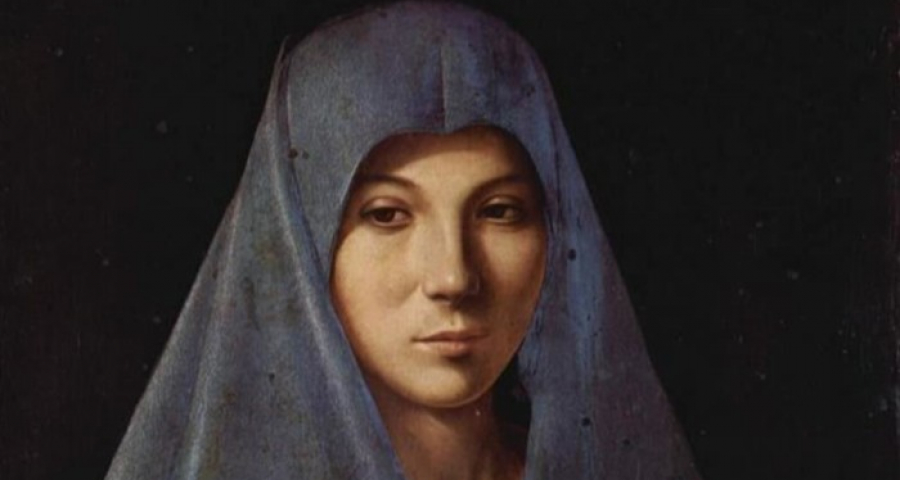Religion - The meditations in Welte's book explore the titles and symbols associated with the Virgin Mary in Christian tradition Thinking, building, and guiding the lives of the faithful through her example, because she can truly show the way of the disciple, having walked it first
by Luigino Bruni
published in Avvenire on 09/24/2025
Bernhard Welte (1906-1983), German philosopher, priest, and theologian, was one of the most important representatives of 20th-century philosophy of religion, a figure at the center of Central European debates on the nature of Christianity, its historical dimension, and its future.
Welte was part of a movement that attempted to conceive of God outside of Western metaphysics, while preserving his real and present presence in the concrete lives of individuals and communities. In particular, he worked extensively on the dialogue between Christianity and the post-modern world, recognizing its contradictions but also its potential for a new Christian spring, including a re-evaluation of Nietzsche's critique, which, together with Heidegger (his fellow citizen and friend), inspired what remains perhaps his most fascinating line of research: “the light of nothingness.”
For it is perhaps impossible for Christianity today to find a way into post-modernity without taking Nietzsche's nihilistic cry very seriously. Welte's intellectual and biographical journey was a tragic one, represented by the image of Jacob's struggle with the angel (Genesis 32), a biblical episode very dear to him.
It may therefore come as a surprise that a philosopher of this nature and caliber devoted some popular meditations to Mary, which are now being reprinted in a new edition, the first being in 1977, Maria la madre di Gesù. Meditazioni (Morcelliana, 80 pages, €10.00). Mary has always been the object of the heart, art, prayer, and popular piety. But theology and philosophy have not written the most beautiful pages about Mary, either when they exalted her by attributing unique and unrepeatable privileges to her, or when, after Luther, they confined her to a theological space that was too narrow and to a liturgical and popular space that was almost non-existent. Today, a new post-modern encounter with Mary is truly necessary, purified from the theology of the Counter-Reformation and the Marian movement of the nineteenth century with its many mariologies, which also includes a re-examination of the excesses of popular piety, although the popular Mary remains far preferable to that of theologians. Because ancient and modern theology on Mary was not satisfied with the Gospel and the entire Bible to speak of her: it wanted to build cathedrals using as bricks the few nouns, verbs, and adjectives of the Gospels, which often ended up distancing her from the people. Mary, in fact, is already great and beloved simply by remaining faithful to what the Gospels tell us about her, and she remains great and beautiful precisely and as long as she remains a creature and a mother, a woman, as long as she remains on the side of history and flesh, like us; with a unique and special mission, certainly, but always of our own nature, always on our own side of heaven, a human side that she makes even more beautiful with her extraordinary and very human beauty: “A mother, by nature, believes in her child above all else. Why should it have been any different for Mary? There is a natural bond of sympathy that unites mother and child and teaches the mother to prefer her child to all others and, in this sense, to believe in him. But this natural faith is put to the test as soon as the child begins to go his own way.”
Welte was a great lover of the historical dimension of Christianity, and this perspective also encompasses his idea of Mary. The Mary of history spent her whole life trying to understand who her son really was, and probably never fully understood him. Mary of Nazareth also had to believe and convert to the words of her son—like everyone else, like us. And affirming this does not diminish Mary's value but enhances it, because it humanizes her faith, does not give her any anthropological discount for her past and retroactive “merits,” and truly makes her an icon for every believer. When Mary, on the other hand, is removed from the Gospel and from her entirely human nature, she ends up entering into myth and thus following its sad fate in modern times.
Mary is a model and icon of the Christian faith because, despite having played a unique and unrepeatable role in human history, she subjectively experienced the same journey as her Son's disciples (“daughter of your son,” Dante, Paradiso). She too had to become a “wandering Aramean” like all Christians and find her son of the flesh in the Spirit: “Mary was part of the circle of disciples gathered in prayer.... One might think: at that moment, Mary was fully the first and dearest sister of the young believing church. One might also think: in this community, the long and sometimes arduous journey was also accomplished for her. Things that had sometimes seemed obscure were clarified.”
The Mary of the people is many things at once, and generally all good. The seed of the Gospel message grew slowly in the humus of the ancient Mediterranean cultures, of its beloved demigods and male and female deities, including the Etruscan and Roman ones venerated with the child in their arms. Christianity took on much of the religious vestiges it encountered over the centuries, and the ‘Christian’ Middle Ages were much broader and more mixed than the Gospel alone. The tears and candles at the feet of the Madonna are thousands of years old, dating back to when women and men began to take a symbolic view of the earth and sought signs and means to communicate with the invisible and with the inhabitants of the other life, which was invisible but felt very real. The Mary of the people was never just that of the church. She was the mother of Jesus, but also the image of the female face of divinity, in a sacred space dominated entirely by males, in heaven and on earth. She was beloved by women also because she was a mother with a child in her arms or with her son on her lap (pietà), women of the people who did not know the Trinitarian dogmas but prayed to a mother who had lived their own lives, who had rejoiced and suffered as they had. The tears shed at the feet of her beloved statues and paintings were not theological tears, they were something very different and much more. All this does not diminish Mary, it historicizes and humanizes her.
Finally, the image that Welte gives us in the chapter dedicated to Mary, full of grace, is very beautiful: "Let us consider intellectual life. It develops in questions, in research, in thought. Wherever it is cultivated, human effort and diligence must be invested to a great extent. But one can experience that the decisive moment of all this life and all this work does not come from human diligence... One might say: now the idea has come to me. Where could something have come from in the arduous journey of our daily work? Because when a good idea comes along, everything can suddenly become better, freer, happier, more open... Something must show itself as Charis, as grace."








